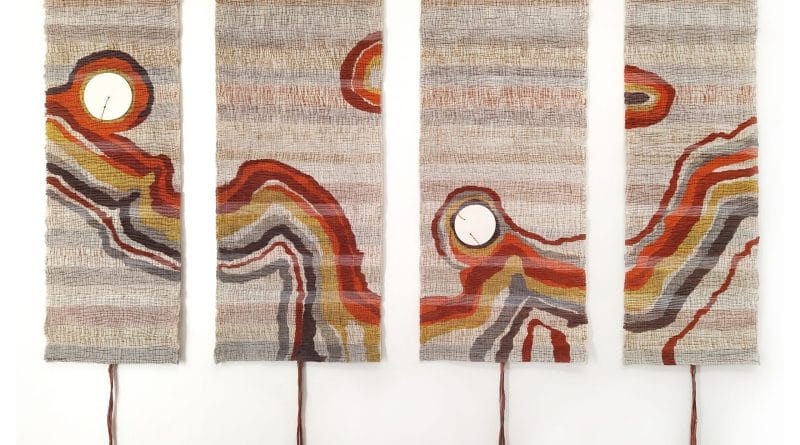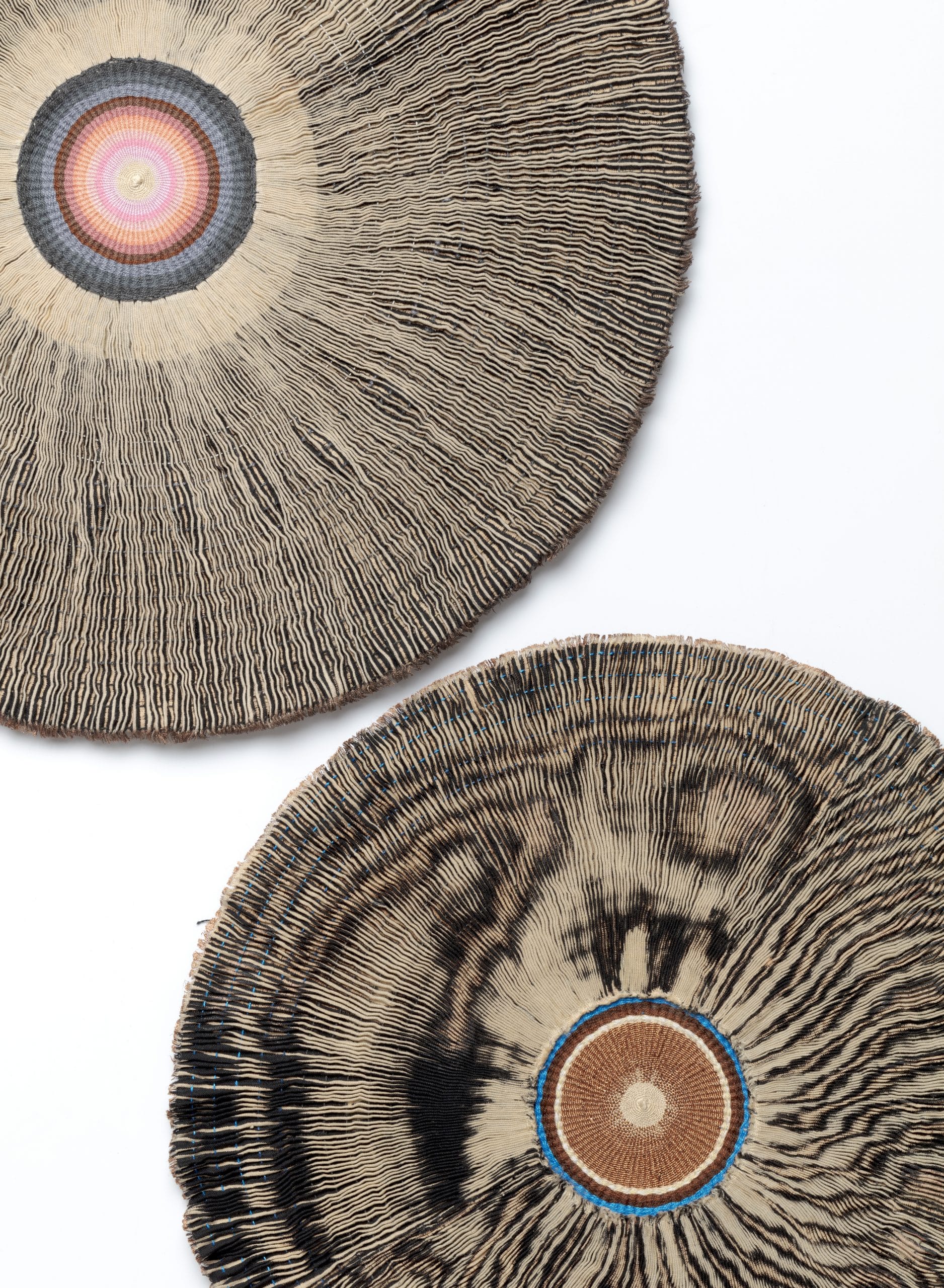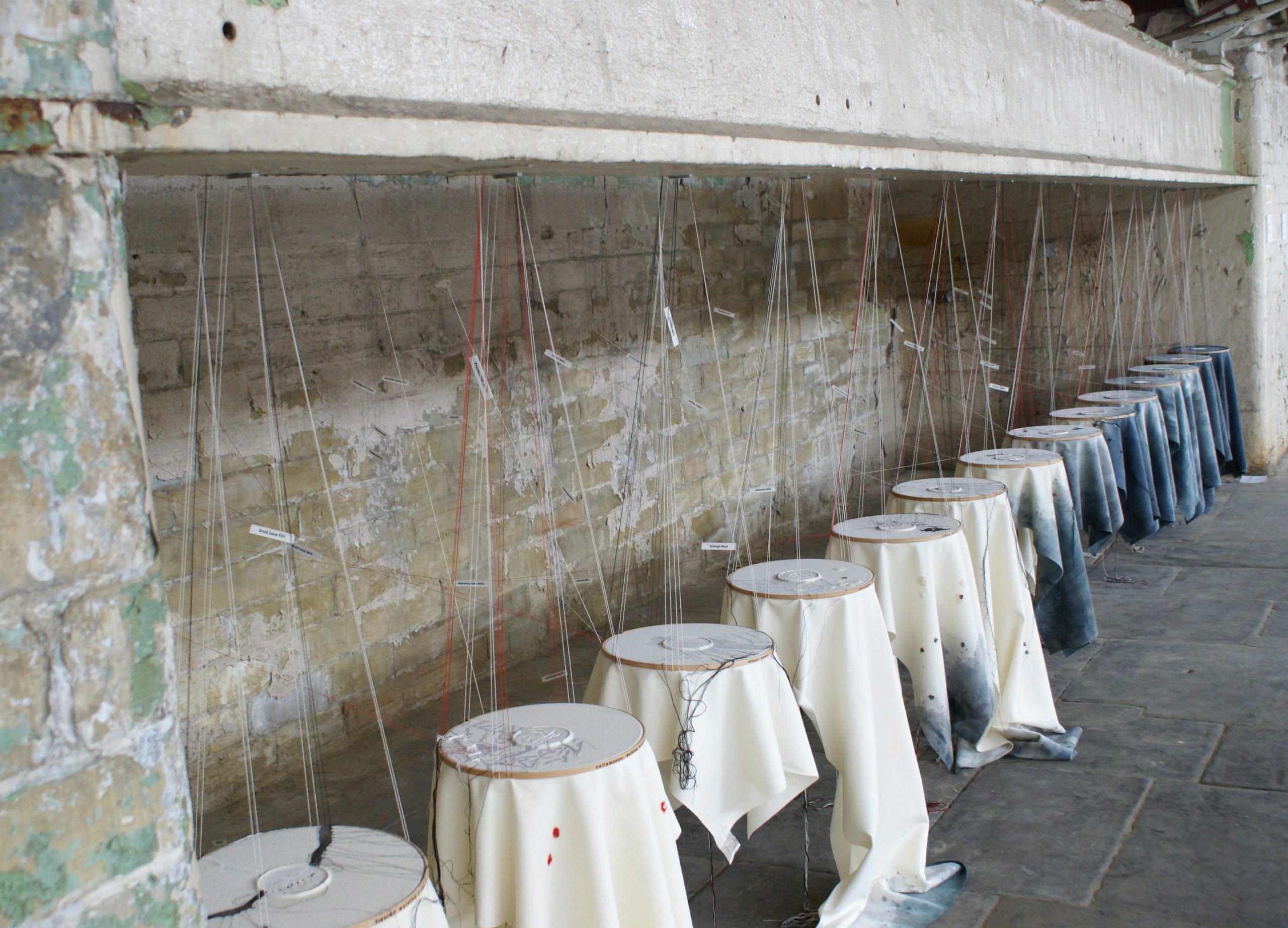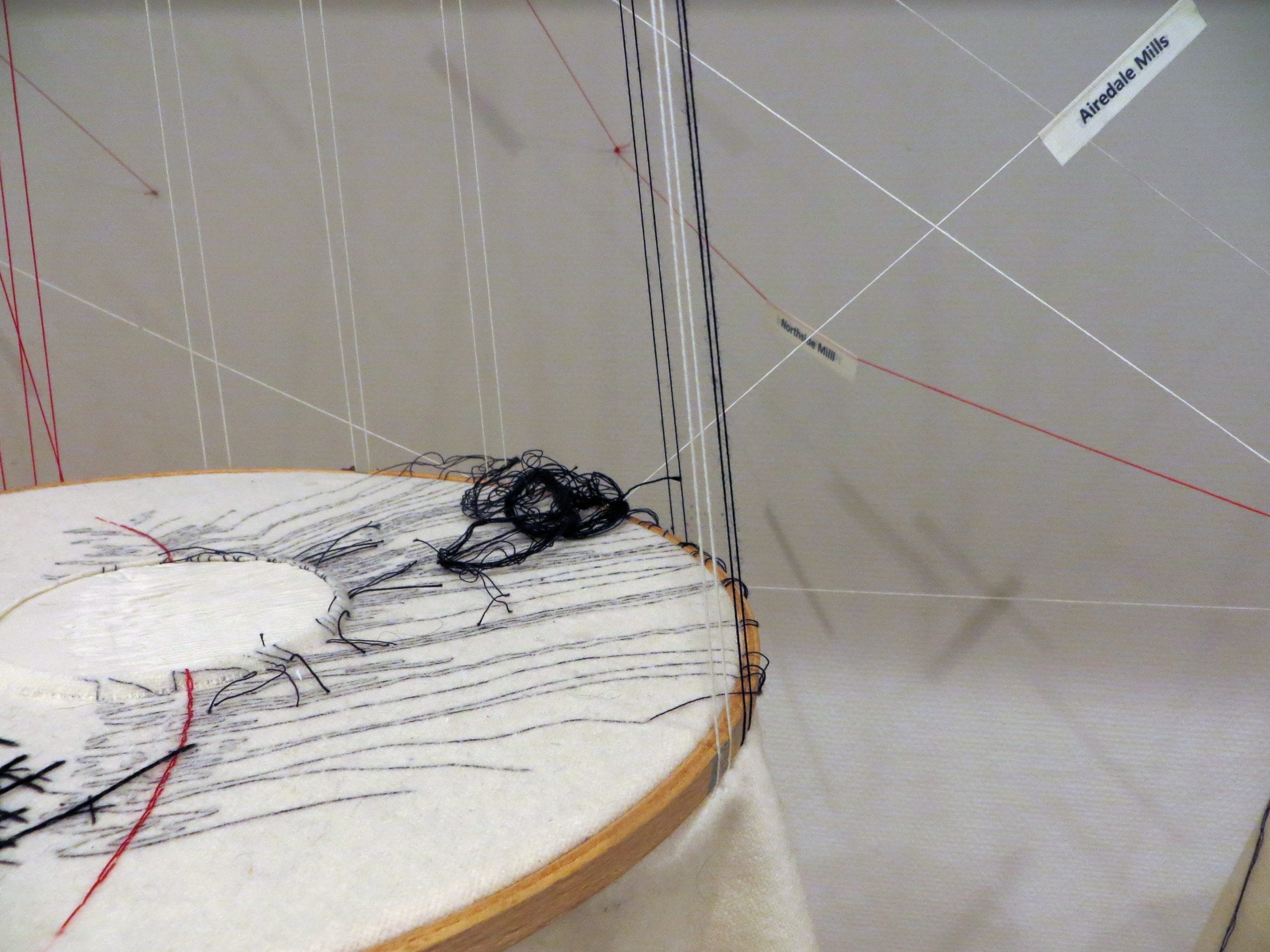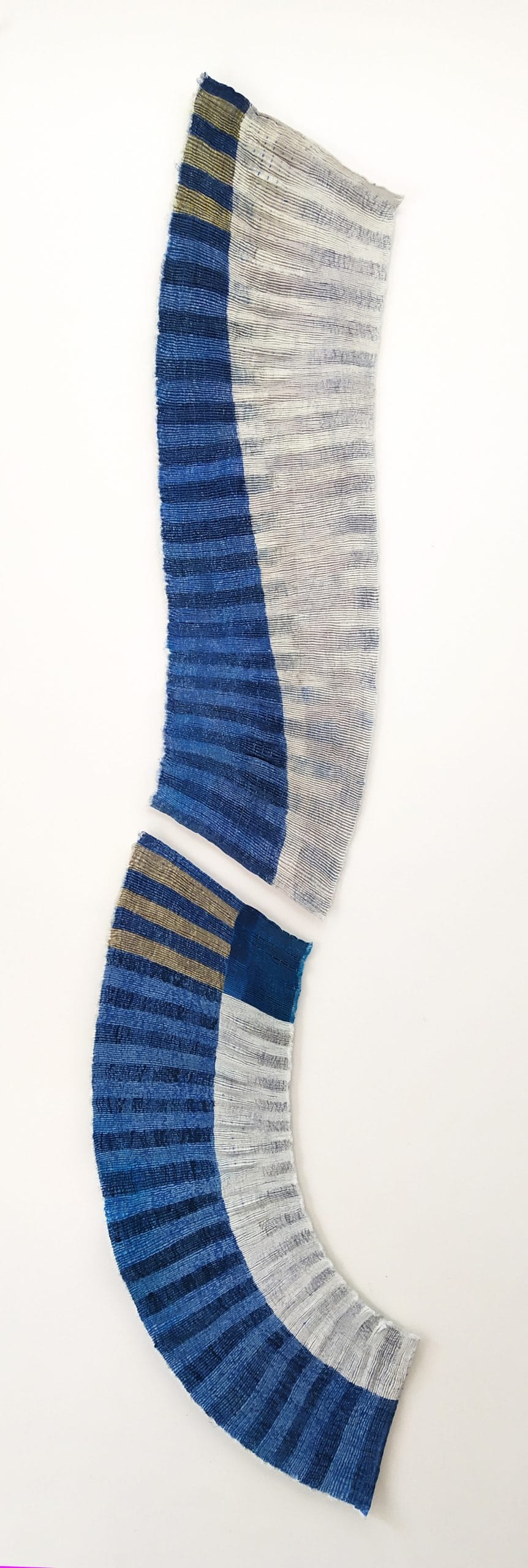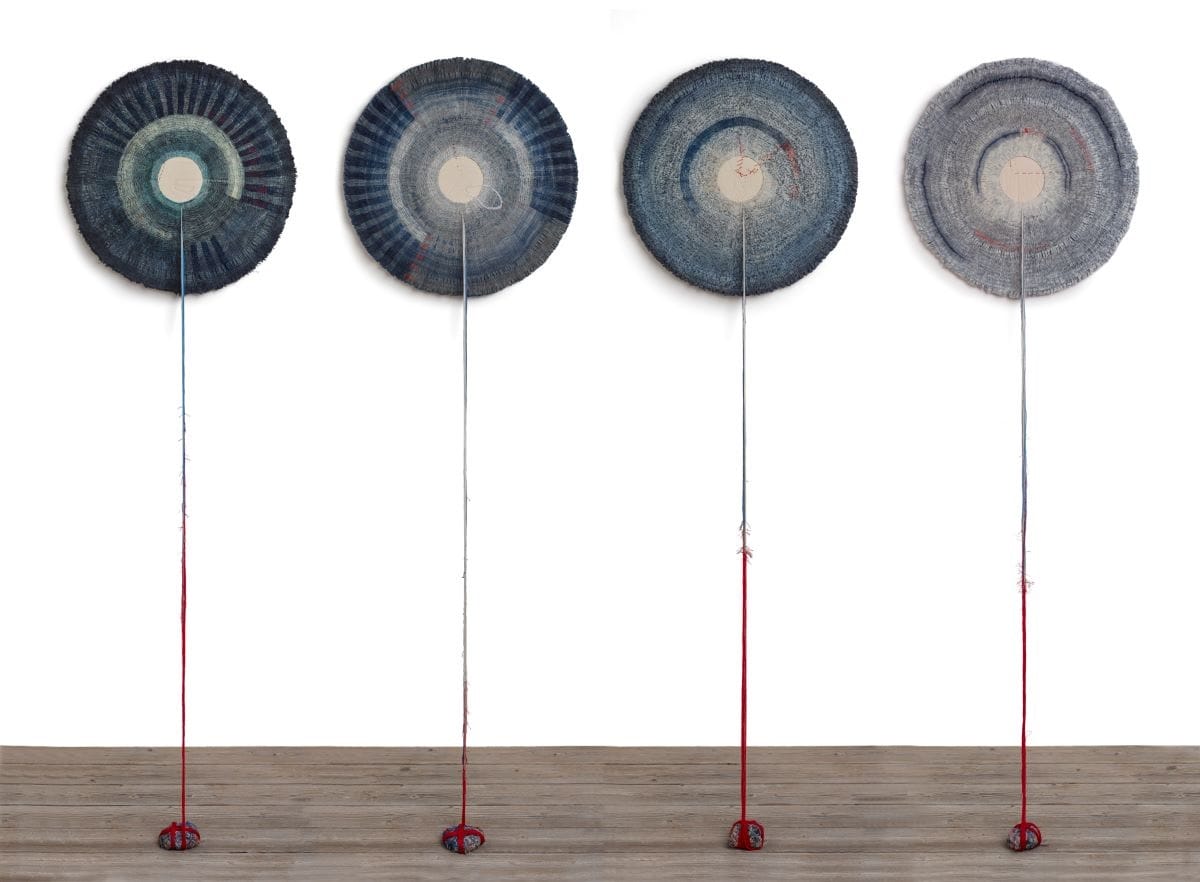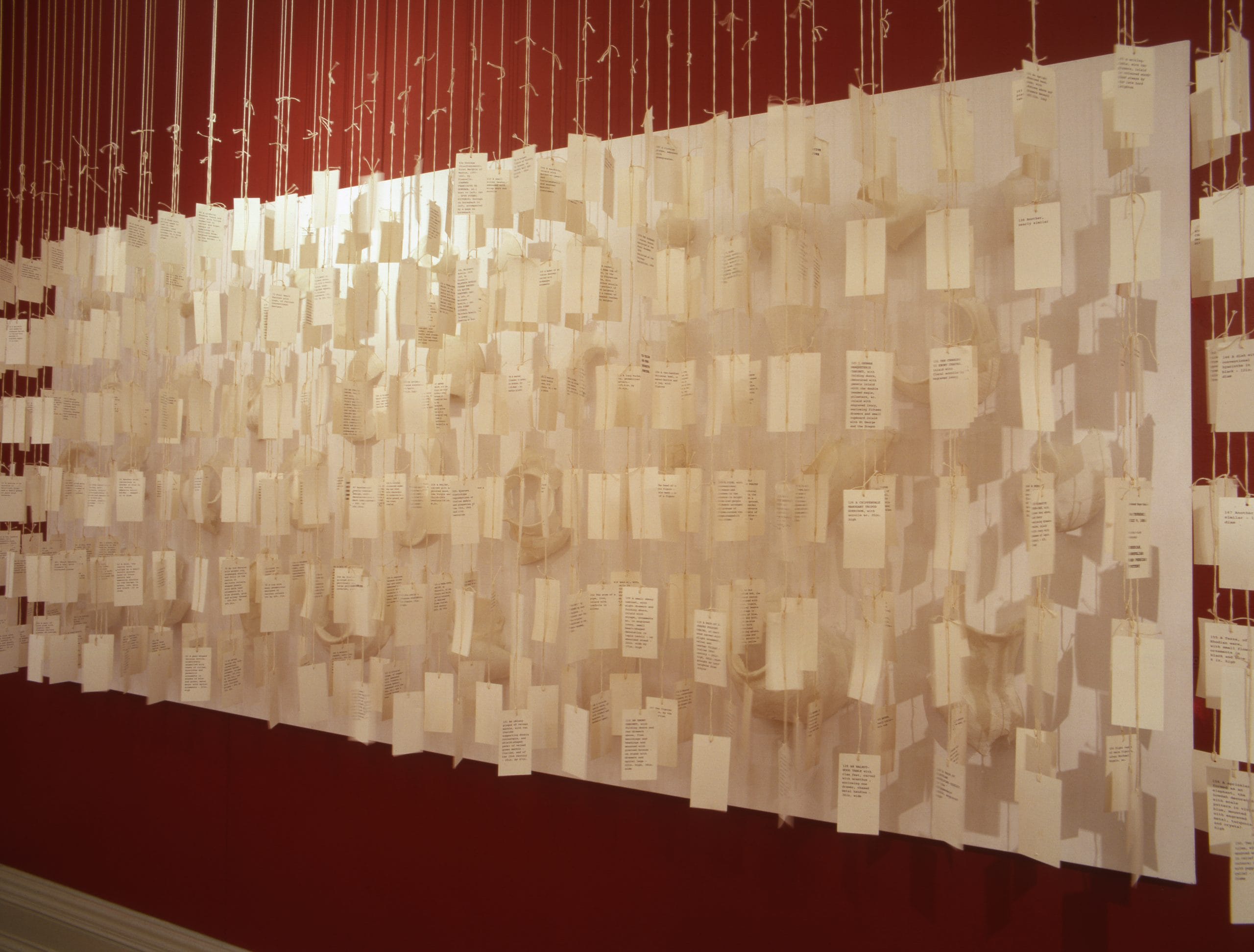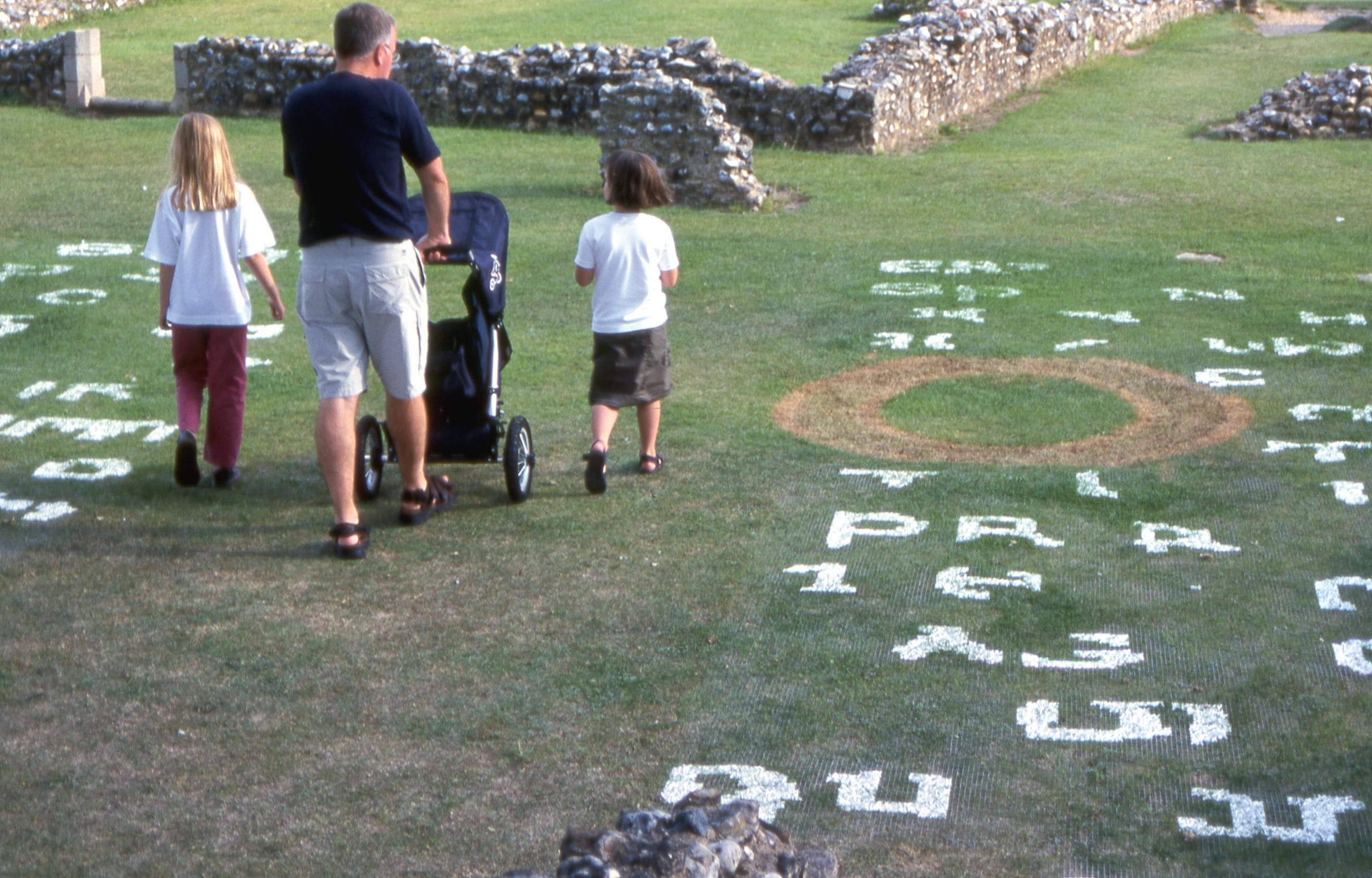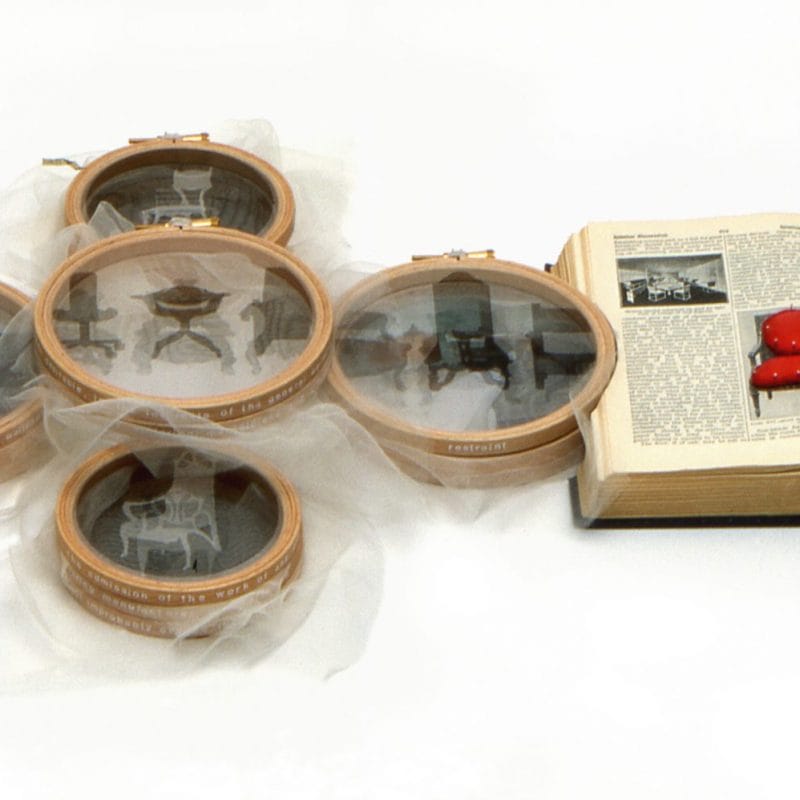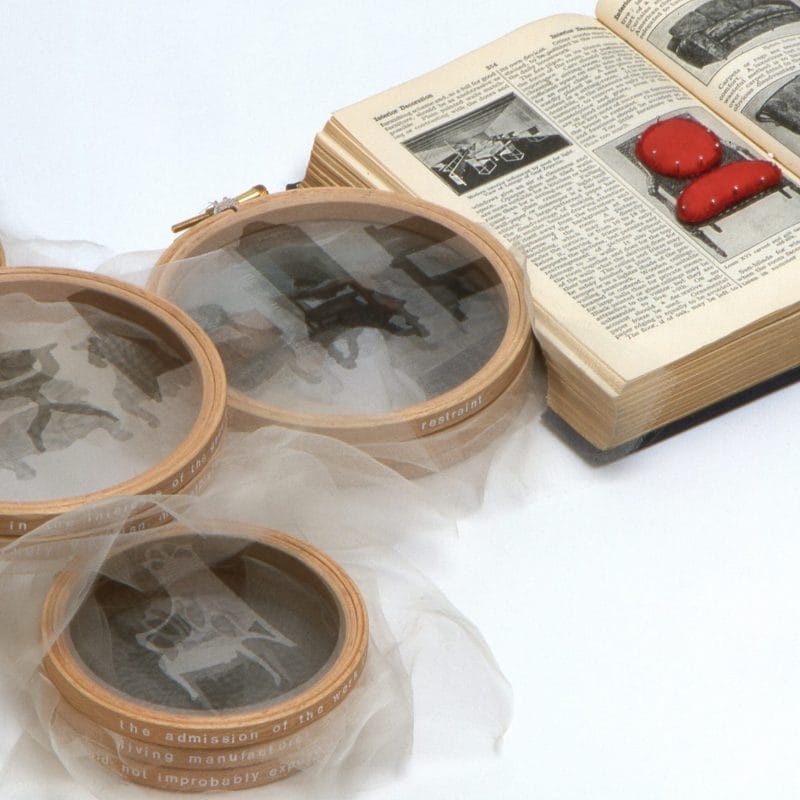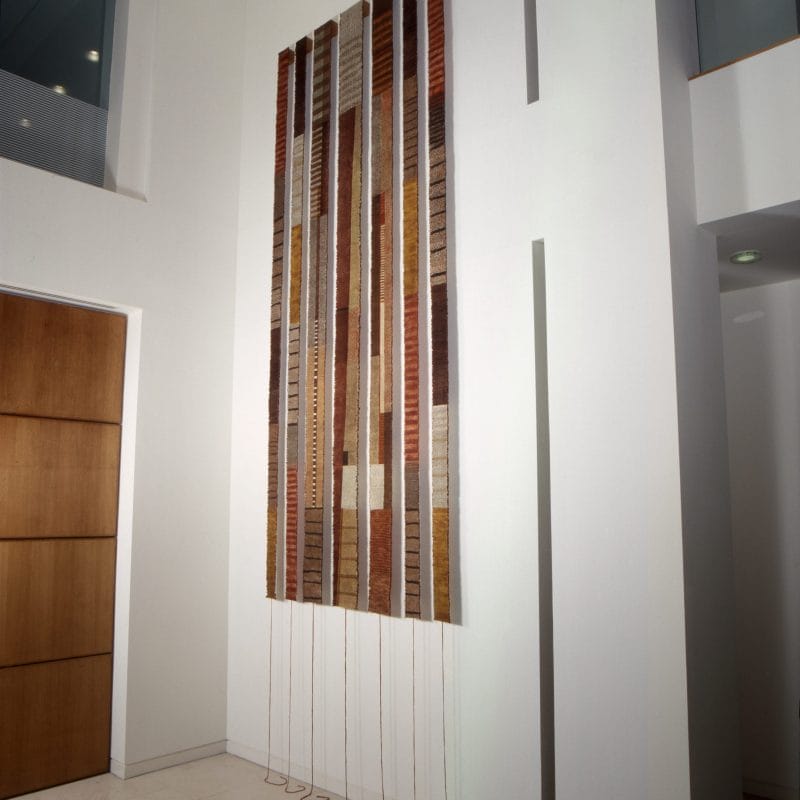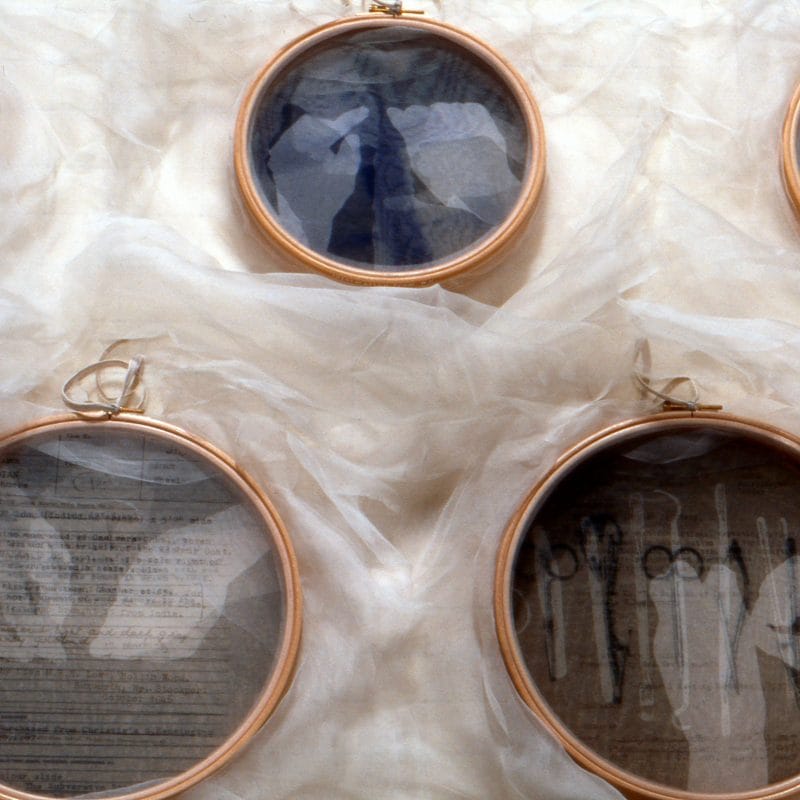INTERVIEW WITH CAROLINE BARTLETT
“Odissey”, detail, 2021, copyright Caroline Bartlett
The fulcrum of the artistic practice of Caroline Bartlett, a textile artist of British origin, is represented by fabrics, intended not only as an expressive medium but also as the subject of the work. The fabric becomes a metaphor for the human condition, rendered through the repeated and ritual gesture of the folding of the fabric and the drapery found in many of her works.
Through the implementation of important projects for institutional sites of historical and cultural importance such as “Behind The Wall”, for the Lancaster Standfast and Barracks archive; “Stilled” for Salts Mill, in Saltaire and others, the artist has addressed the themes of memory, of conservation and the role that these sites play in the process of creating the cultural identity of these places.
Bartlett currently exhibits in the UK and internationally and her work is represented in numerous private and public collections including those of the Victoria and Albert Museum, London; Whitworth Art Gallery, Manchester and the Bankfield Museum, Halifax.
“Homage IV and V”, 2021, pleated, dyed linen, cotton thread, 41 cm diameter and 50cm diameter, ph.cr. Michael Wicks, copyright Caroline Bartlett
One of the aspects that characterises your work is the presence of endless folds draped over the entire surface of the fabric and the circular shape of the work. What do these two elements symbolise?
English art critic, novelist, painter and poet John Berger talks about life’s experiences folding backwards and forwards on themselves. The employment of textile process using folding, enfolding, unfolding and refolding, which then conceal and reveal become for me a metaphorical representation. There are also correlations between spinning, weaving, and dyeing, and the regenerative and degenerative processes of life; a continuing cycle, hence the circular shapes. In my most recent body of work created in response to the work of potter Lucie Rie and during Covid and lockdown, the circle has echoes with the centering clay on a wheel and how this might highlight the need for the centring of self in difficult times.
“Imprint-detail”, 2018, Linen, porcelain, cotton thread, stone, Diameter, 62 cm, ph. Cr. Caroline Bartlett, copyright Caroline Bartlett
Are the fabrics a means for you to give substance to the idea, or do they also represent the content, the subject of your work?
They might do both. It depends on the work. The fabrics might be chosen for their behavioral, aesthetic or sensory properties but also for what they say- what associations they have and how they might trigger memories and recollections. Textiles have a history in which the embodiment of memory is part of their cultural encoding. Cloth, through its’ appearance and the processes involved in putting it together, can evoke ideas of connectedness or tying to each other and to the past and future. Within language, textile processes and fabrications play a role in our concepts of organisation, structure and community.
“Backwards, Forwards”, 2011, Wool fabric, cotton thread, hand stitched, 72cm x 317cm – each panel 72 cmx 33. cm, ph. cr. Michael Wicks, Private Collection, copyright Caterine Bartlett
You have participated in important site-specific projects, for institutional sites of historical and cultural significance such as Behind the Wall, for the Standfast and Barracks archive in Lancaster; Stilled for Salts Mill, Saltaire.
The historical, social and cultural role of these places of memory has an important influence on your creative process. Can you talk about this?
My practice has been driven by questions such as: how do we record memory and construct knowledge? What is the space between intuitive remembering and the deliberate act of recollection? In these works, I hoped to trigger individual or collective memories and histories and to create a place where new subjective meanings can be created. As part of this process, I wanted the work to engage in some way with the community in which these sites are embedded. The associations may not always be obvious to the general public but there are elements in the works which local people will be able to read through their own associations with place- at Standfast and Barracks, the naming of fabrics, the inclusion of a commemorative scarf which one of the employees provided and which forms one of the images. ‘Stilled’, made in response to Salts Mill, includes the names of mills and dye works once found on a geographical trajectory from its’ position in Saltaire to Bradford. Reference is also made to cloths that are no longer part of our lexicon but may be familiar to textile workers.
“Unravellings”, 2017, Manipulated, printed linen, stitch, 4800cm x1235 cm, ph. cr. Caroline Bartlett, Comissioned for ‘Behind the Wall’. Supported by the Arts Council, copyright Caroline Bartlett
Meeting Point is one of your most recent works. How did it come about and what is its inspiration?
This piece steps away from other works. Ideas for this piece were set in motion whilst walking and conversing on a coastal trail in the bright light of a sharp but sunny winter day. I started to think about the rhythm of the walk and making a work in which two pieces were in conversation with each other. ’Meeting Point’ embodies ideas of a place and time but also alludes to coming together across a divide where paths converge, intersect, where there is difference but also similarity.
“Meeting Point”, 2020, Mono-printed, stitched and manipulated linen, cotton threads, 60” x 16.5,” copyright Caroline Bartlett
You often use a colour scheme based on neutral or natural tones associated with blue. What is the meaning and role of colour in your work?
There is no specific general meaning apart from the red thread which is a common component of many of the works. The deployment of colour has not always seemed appropriate and its use tends to be pared back, though recent work relating to the Lucie Rie collection at the Crafts Study Centre highlights elements of her colour palette in the bright yellow and turquoise.
If I asked you to look back in time and identify, among your older works, the one that you feel is most distant from you today, which one would you choose? And again analysing this work, could you establish what influence it has had and how it has helped you in your professional development?
The project led me into looking for both the tangible and intangible, the seen and unseen, in an attempt to tell different stories and to make connections.
“On the Shelves of Memory”, in response to Leighton House as Part of The Artists Journey, 1999, Moulded fabric, labels, string, canvas, 268cm x 122cm x 35cm, copyright Caroline Bartlett
A work or a project to which you are particularly attached?
A difficult choice: ‘Codices’ or ‘Stilled’. ‘Codices’ was a temporary outdoor project made in response to the ruins Benedictine Abbey in Bury St Edmunds. What makes it special to me was a summer of social interaction as the letter panels were stitched by myself and 13 volunteers, all leaving their individual mark: as in handwriting. ‘Stilled’ is currently being exhibited in my solo show at the Crafts Study Centre in Farnham. I have found it particularly interesting to see how it changes and is affected by its environment in whichever spaces it is hung; from being presented in a crumbling space where the walls themselves seemed to seep cloth, to being shown in a white cube where the shadows from lighting create their own meaning. It is almost a different piece each time it is hung.
